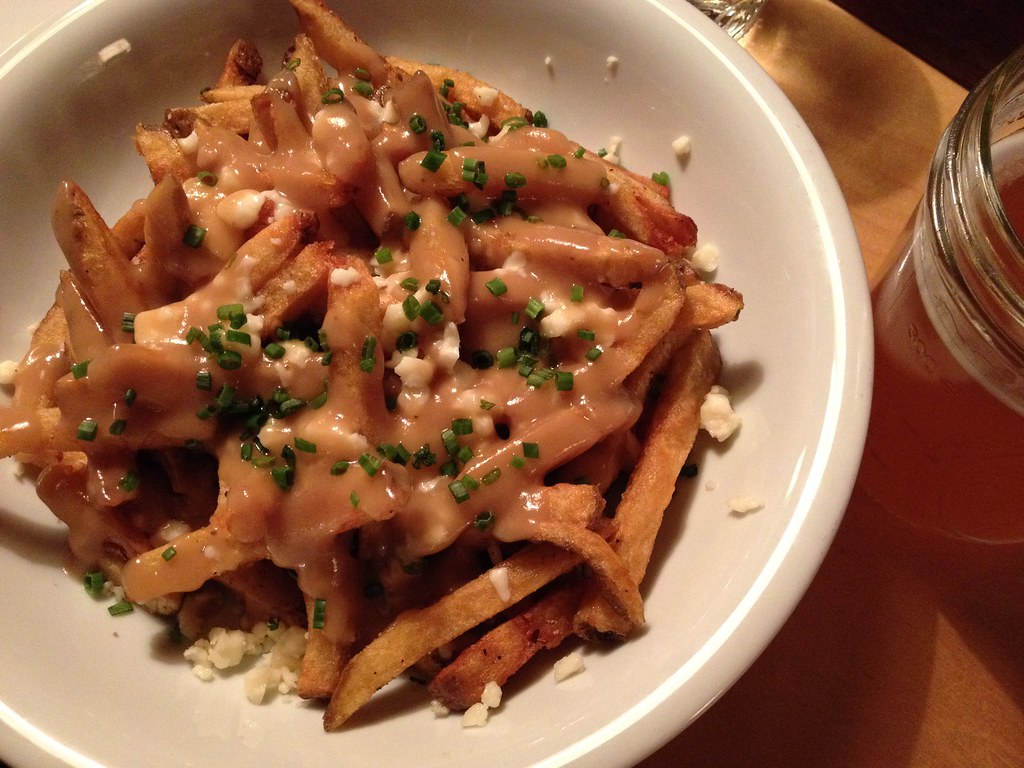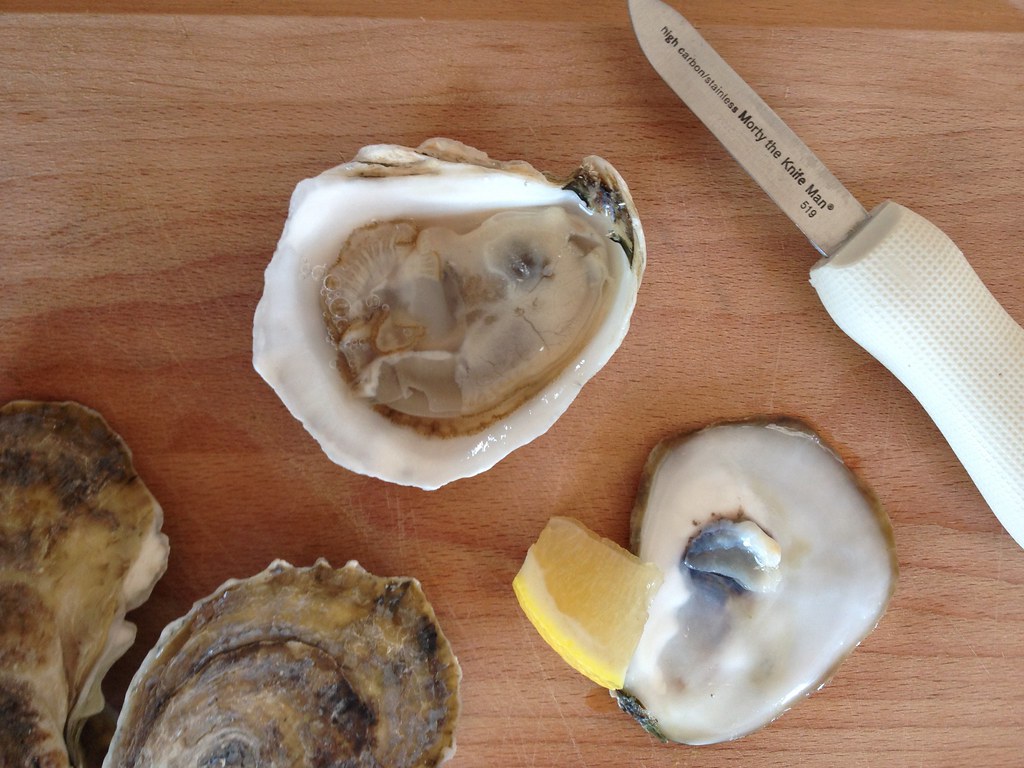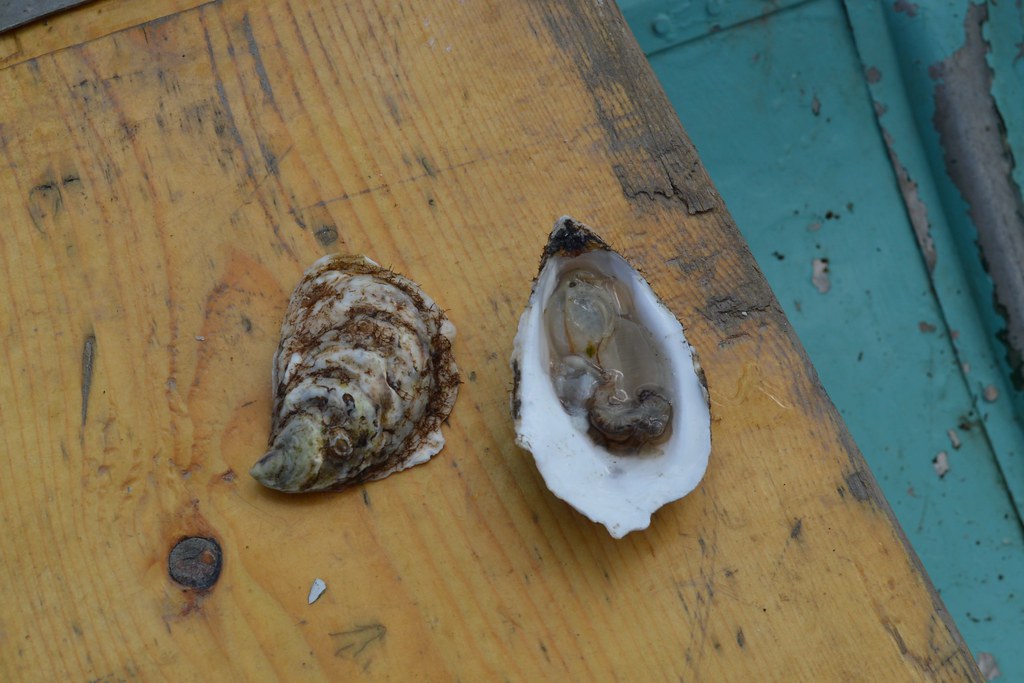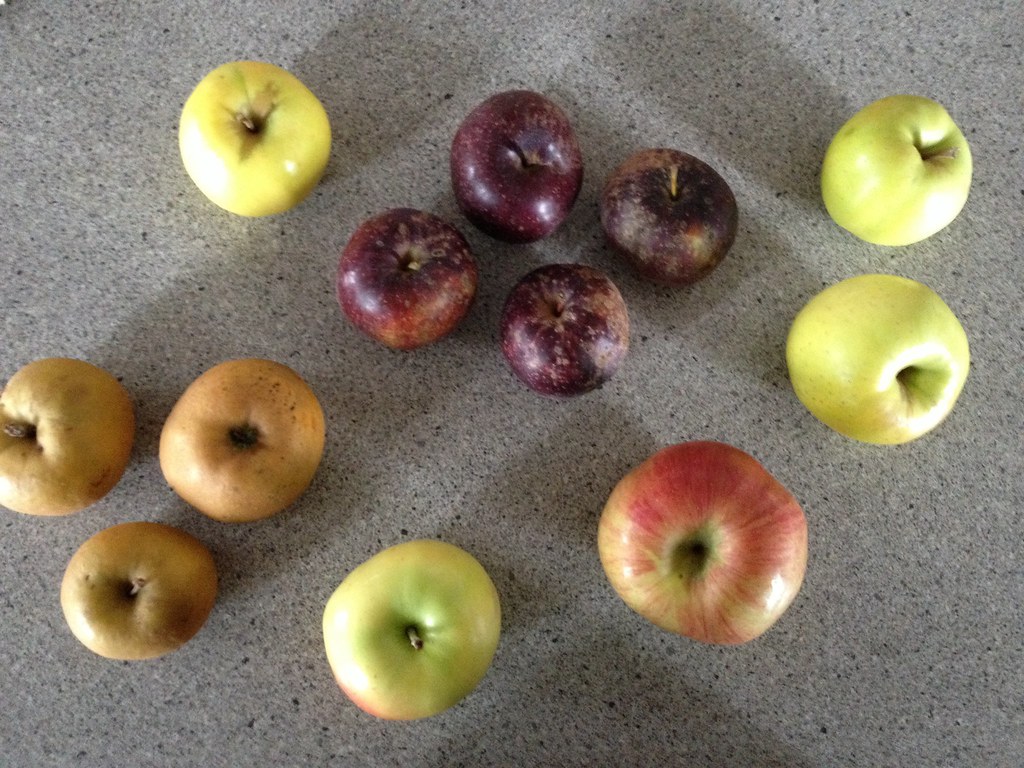 When someone describes oysters as tasting “of the sea,” it always makes me wonder the last time they tasted seawater. When I’ve ingested the ocean, it’s usually accidentally, and then I’m coughing, choking, and spitting — not how I’d like to react after eating an oyster. In fact, oysters can taste buttery, mild, sweet, earthy, or briny, and it’s up to you to figure out what you like. As the holidays approach, take the time to explore the many varieties of oysters available in Maine — and perhaps even establish your own tradition along the way.
When someone describes oysters as tasting “of the sea,” it always makes me wonder the last time they tasted seawater. When I’ve ingested the ocean, it’s usually accidentally, and then I’m coughing, choking, and spitting — not how I’d like to react after eating an oyster. In fact, oysters can taste buttery, mild, sweet, earthy, or briny, and it’s up to you to figure out what you like. As the holidays approach, take the time to explore the many varieties of oysters available in Maine — and perhaps even establish your own tradition along the way. Of course you can go to Portland’s raw-bar hot spots Eventide Oyster Co. and Boone’s Fish House and Oyster Room for your shellfish education. Both boast impressive selections of oyster varieties and knowledgeable staff to help you discover your favorites. But there’s something to be said for shucking oysters at home. For one, they’re about half the price at a seafood market (less than $2 each) than at a restaurant. Then there’s the way serving oysters on the half-shell stands to elevate and enliven a gathering. Sharing these freshly shucked treats with your friends and family can make you feel like part of an exclusive club. Requiring a bit of gastronomical courage, eating oysters will help you find the more adventurous people at any holiday party. In order to avoid standing alone with your shucking knife, go easy on everyone and pick up some crowd-pleasing varieties.
First, think small. In oyster speak, a cocktail oyster is under three inches; avoid the intimidating two-bite oysters. Next, select a few different types. Most of the oysters grown on the Eastern seaboard are the same species, but can taste vastly different depending on where they’re from. Just like wine, oysters have their own terroir or sense of place, where the characteristics of the area’s soil or water are expressed through flavor. Chris Miller at Browne Trading Co. recommends Winter Points from Bath for their rich, briny flavor. Small, sweet Beausoleils from New Brunswick are a great variety for beginners and aficionados alike. For someone who likes a challenge, try Belons, the only wild oyster left in North America. True Belons are grown in Brittany, France, so ones grown here in Maine are known as European Flat oysters. These oysters have a strong metallic flavor that’s frequently compared to sucking on a penny.
To successfully shuck your own oysters, you’ll need an oyster knife ($10), available at the seafood market where you purchase your oysters. Above all, be careful. Shucking oysters is supposed to add to a holiday party, not interrupt it with an emergency-room visit. Wash your oysters well to remove the grit on the shells. Use the tip of the oyster knife to pry open the two shells of the oyster at the hinge using leverage, not brute strength. Watch a few videos online to get the basics, and practice your technique until you’re shucking with ease. Serve oysters with lemon wedges — save the cocktail sauce for the shrimp. I know cocktail sauce is everyone’s favorite, but all it does is mask the delicate flavors of oysters.
With a myriad flavors available, there’s no reason to say you don’t like oysters anymore. This holiday season, take the time to explore the terroir of oysters. They’re a safe conversation topic among new acquaintances or cantankerous family members, and provide a welcome break from the usual holiday appetizers. And who knows, maybe you’ll agree with French poet Leon-Paul Fargue’s assessment that eating oysters is “like kissing the sea on the lips.”
BROWNE TRADING CO. | 262 Commercial St, Portland | Mon-Sat, 10 am-6 pm | 207.775.7560 | brownetrading.com
HARBOR FISH MARKET | 9 Custom House Wharf, Portland | Mon-Sat, 8:30 am-5:30 pm, Sun 9 am-3 pm | 207.775.0251 | harborfish.com
Originally published in the Portland Phoenix on December 7, 2013







